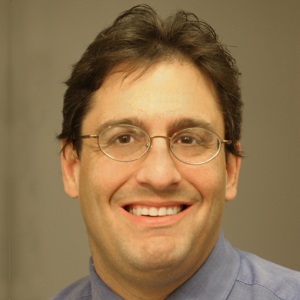Becoming competitive for a teaching (and research) position: part 1
Fortunate graduate students and postdocs have mentors or programs to help guide them during their job search. But, having served on several search committees in biology and chemistry departments, I know that many are unfamiliar with what it takes to apply for a position at a primarily undergraduate institution.
A well-written application
There are several influential articles and publications on how to get a job at a PUI, including Malcolm Campbell’s article, “How to Get a Teaching Job at a Primarily Undergraduate Institution.” In addition to Campbell’s work, Michelle Bushey and others wrote a very good article for the Council on Undergraduate Research in 2012.
I wish I had read some of these before I interviewed for my first position. As I completed a postdoc at a major research institution in a Howard Hughes Medical Institute lab, my professional focus was justifiably on research. However, I was fortunate to run across an HHMI magazine article featuring a frantically busy but fulfilled undergraduate faculty member. I latched onto her comments on teaching using different “pedagogies” and “engagement activities” in the classroom. I wasn’t clear on what exactly those were, but I did a little research and peppered my application with these terms. This seemed to be what caught the attention of the search committee and brought my application for further scrutiny.
I was lucky. The odds are that my research statement was over the top, too technical and ambitious. I don’t think my application would fair nearly as well in today’s applicant pool. To be highly competitive, one has to prepare well before writing the application.

Types of teaching and research positions
Ask someone working at a PUI or in other teaching position what their greatest achievement is and you will likely get two sorts of answers. PUI faculty will be just as likely to tell you about a student they helped or a great class they developed as they will be to tell you about interesting experiments, mentoring students in a research lab, publishing papers or funding grants. These positions provide a diverse set of challenges and accomplishments.
Here is a short list of positions that mix teaching and research:
-
PUI professor: PUIs come in different flavors: public and private, and large and small. Some require faculty to teach four or five courses (classes or teaching laboratories) each semester, while others require only two or three. Depending on the institution, these classes and labs may have staff support or not. Typically, schools with higher teaching loads do not have excessive research requirements — and some have none. Schools with lower teaching loads will expect significant research. This involves running an active research group, involving undergraduates in research, one or more publications, and either a grant or evidence of actively working to get funding. For either type of PUI, both teaching and research are important. A fantastic research program with a weak teaching history is not enough for tenure at most PUIs.
-
Community college professor: With skyrocketing tuitions, there is a growing demand for community colleges to help students transition to four-year institutions. Some community colleges now want to include the experience of research to teach critical thinking skills.
-
Instructor/lecturer: Medical, graduate and even undergraduate schools maintain instructor positions, which can be full-time employment with benefits. These positions often include advising duties, coordinating teaching assistants, and preparing and instructing labs or entry-level classes. Different universities take very different approaches to these positions. In a few cases, people in these positions are on equal footing with tenure-track faculty. Many have had meaningful and important careers in these positions. This career option should not be considered a second choice; it is an opportunity for someone who wants to teach science without the headaches that come with research and the tenure track.
-
Adjunct, fixed-term or visiting professor: For those who are not looking for a permanent position but want to stay professionally active without all the expectations of tenure-track positions, these jobs are for you. Visiting and fixed-term positions are full-time teaching-specific jobs for one or two years. However, if your goal is to get a position at a PUI, these are risky career moves and are not the best inside track to a tenured position.
How to prepare
Those who are interested in a teaching career can help themselves by preparing early. Graduate students may wait a year or two before starting to get their research moving. Postdocs should work on a few of the following suggestions as soon as possible.
If your PI is not enthused about your career plans, you may need to find someone who is supportive of your long-term goals. Do not deceive your adviser, even if he or she isn’t the kind to encourage this career direction. On many levels that is a bad idea. Talk to someone who understands and will listen to your ideas.
For those in graduate school, consider the coursework you’re taking. Undergraduate professors need to be able to teach courses well out of their comfort zone. Besides teaching a course in your discipline, you will be asked to teach courses outside of your specialty.
Look at a range of class offerings from the institutions you are interested in working at. Research what courses are regularly offered and take similar graduate courses. Few search committees or departments will be overly enthused to have a candidate with too narrow a focus. Applicants who can teach a range of traditional courses and provide interesting advanced courses are welcomed with open arms.
Biochemistry, molecular biology, physiology, general chemistry, cell biology, microbiology, immunology, organic chemistry, introductory biology and non-science major courses are in high demand.
Consider teaching a non-science major class or a pre-health survey course. Take a class to help you gain that experience and show that you have the expertise.
The best hire can help meet these ever changing demands.
Get teaching experience
Teaching experience is critical.
After reading hundreds of applications, I can tell you that being a teaching assistant won’t make you stand out. Nearly every applicant has been a TA. What makes an applicant stand out is an authentic teaching experience. Strong candidates will have experience creating classes and syllabi, managing courses and working with students.
You also can get experience by teaching a part of your adviser’s course or running a study group for new grad students or medical students.
It’s also important to learn about pedagogy, assessment and course development.
Read the literature. Search for articles on classroom instruction, teaching labs, and how to assess learning. You can find publications on integrating research into the classroom and laboratory, how to determine and create learning outcomes, and Bloom’s taxonomy. Journals to start your search include: Biochemistry and Molecular Biology Education Journal (BAMBED), the Journal of Chemical Education, CBE–Life Sciences Education (I highly recommend articles in this journal written by Erin Dolan), and the Journal of College Science Teaching.
Take a course on teaching effectiveness, pedagogy and assessment from your education department. Also, most universities have some sort of teaching and learning center. If your current institution has such an office, stop in and gain some information on teaching.
Don’t wait until you begin writing your job application. Something like this should be done while in graduate school or during your postdoctoral training.
Every year at the ASBMB annual meeting, the society partners with other organizations representing different disciplines and has poster sessions and sessions on teaching and learning. Take a moment to stop and visit with members of this broader community. These are pretty friendly and enthusiastic people willing and interested in helping you learn.
The ASBMB also has symposia focused on student-centered learning. Graduate students and postdocs and encouraged to attend. Faculty from large and small universities participate in sessions focusing on class and lab teaching.
Other organizations and programs that are fantastic resources are the Association of American Colleges & Universities’ Project Kaleidoscope and the Council on Undergraduate Research.
Mentoring
Learning how to mentor and manage an undergraduate research lab is much more than coming up with a great project, getting funded and being published. You must involve undergraduates. Integrating this into your teaching and research plans will help you stand out.
If you have the opportunity, mentor an undergraduate in a research project. Give the student a meaningful project and help them design experiments that could be part of a publication. Being published with an undergraduate you mentored indicates to hiring committees that you know how to and are experienced in guiding students through the scientific process.
I’ve described a lot of possible ways to prepare for the teaching side of a new career. One does not need to do everything listed above, but a careful examination of your environment and interests should guide you to become a more prepared and outstanding candidate.
Many departments hire new faculty with the goal of changing or growing some part of their program. If you have legitimate experience and knowledge in teaching and research, you will jump to the top of the interview list.
In part 2, I will address the application and how to make your file stand out.
This article originally appeared on The Substrate Blog, published by the American Society for Biochemistry and Molecular Biology. It has since been adapted and slightly updated for ASBMB Today.
Enjoy reading ASBMB Today?
Become a member to receive the print edition four times a year and the digital edition monthly.
Learn moreFeatured jobs
from the ASBMB career center
Get the latest from ASBMB Today
Enter your email address, and we’ll send you a weekly email with recent articles, interviews and more.
Latest in Careers
Careers highlights or most popular articles
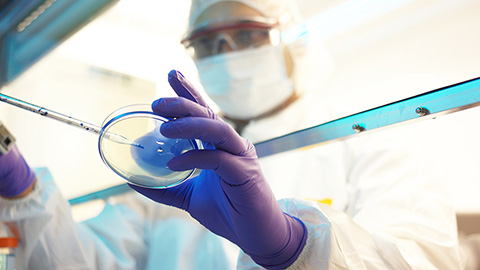
Inside industry postdocs
As more Ph.D. scientists look beyond academia, industry postdocs offer a new kind of training, where mentorship meets mission-driven research. Fellows at Pfizer and Genentech share how these programs prepare them to translate discovery into impact.
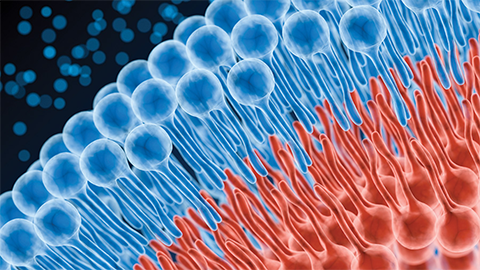
Upcoming opportunities
The Lipid Research Division Seminar Series returns Oct. 15 with talks on recent advances in triglyceride cycling in adipocytes.

Writing with AI turns chaos into clarity
Associate professor shares how generative AI, used as a creative whiteboard, helps scientists refine ideas, structure complexity and sharpen clarity — transforming the messy process of discovery into compelling science writing.

Upcoming opportunities
Register for the free ASBMB webinar on the power of "Yes" and knowing when to use it, coming up on Sept. 30!
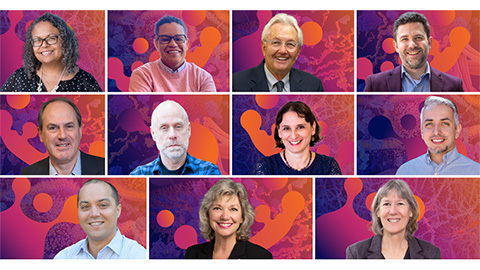
ASBMB names 2026 award winners
Check out their lectures at the annual meeting in March in the Washington, D.C., metro area.
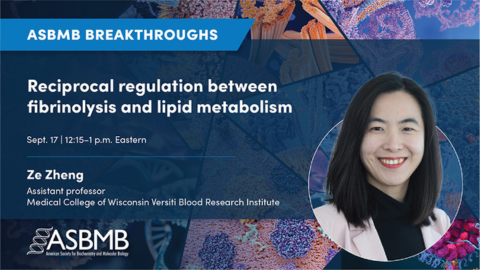
Upcoming opportunities
Register for the free ASBMB Breakthroughs webinar on lipid metabolism, coming up on Sept. 17!

